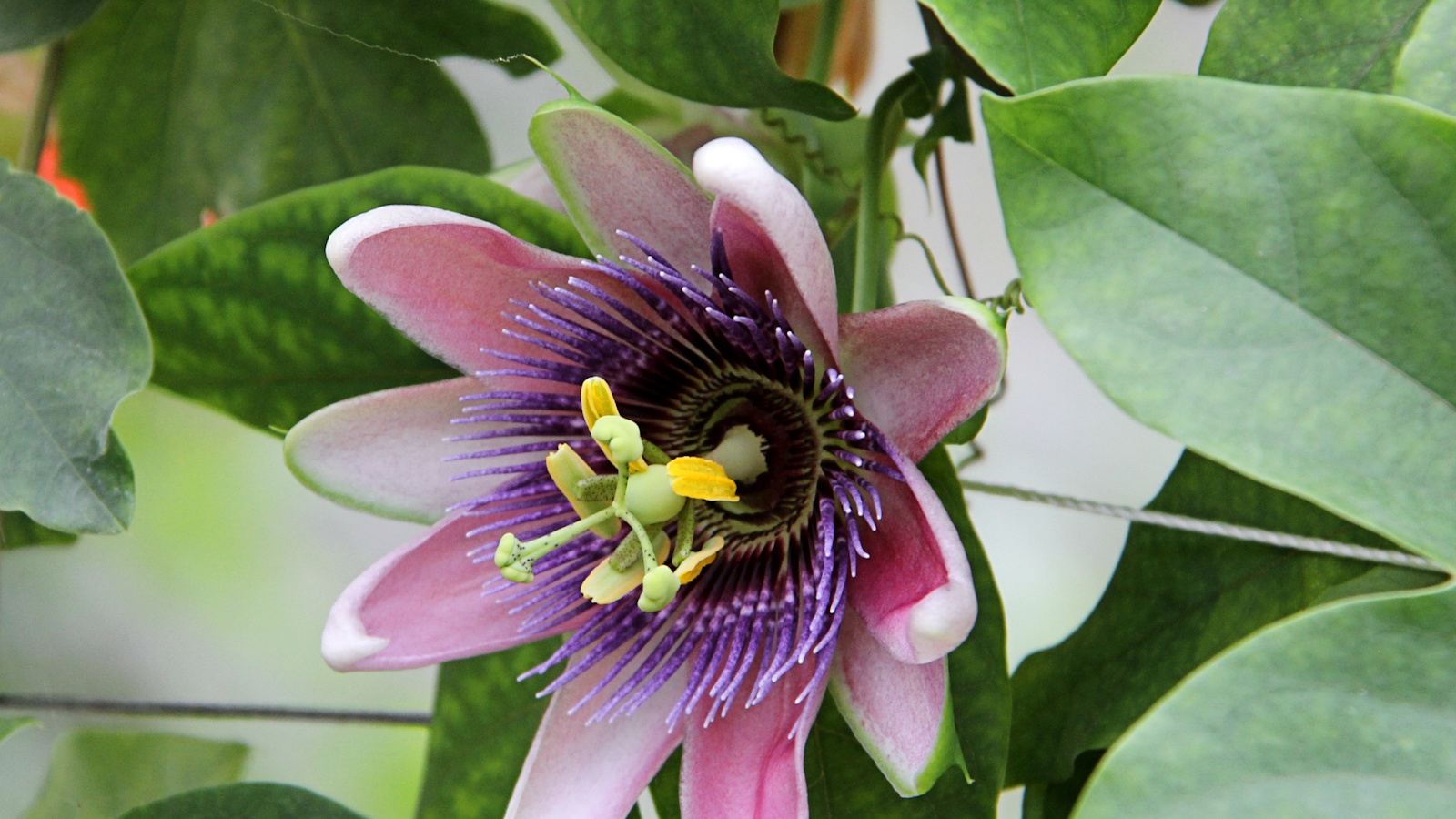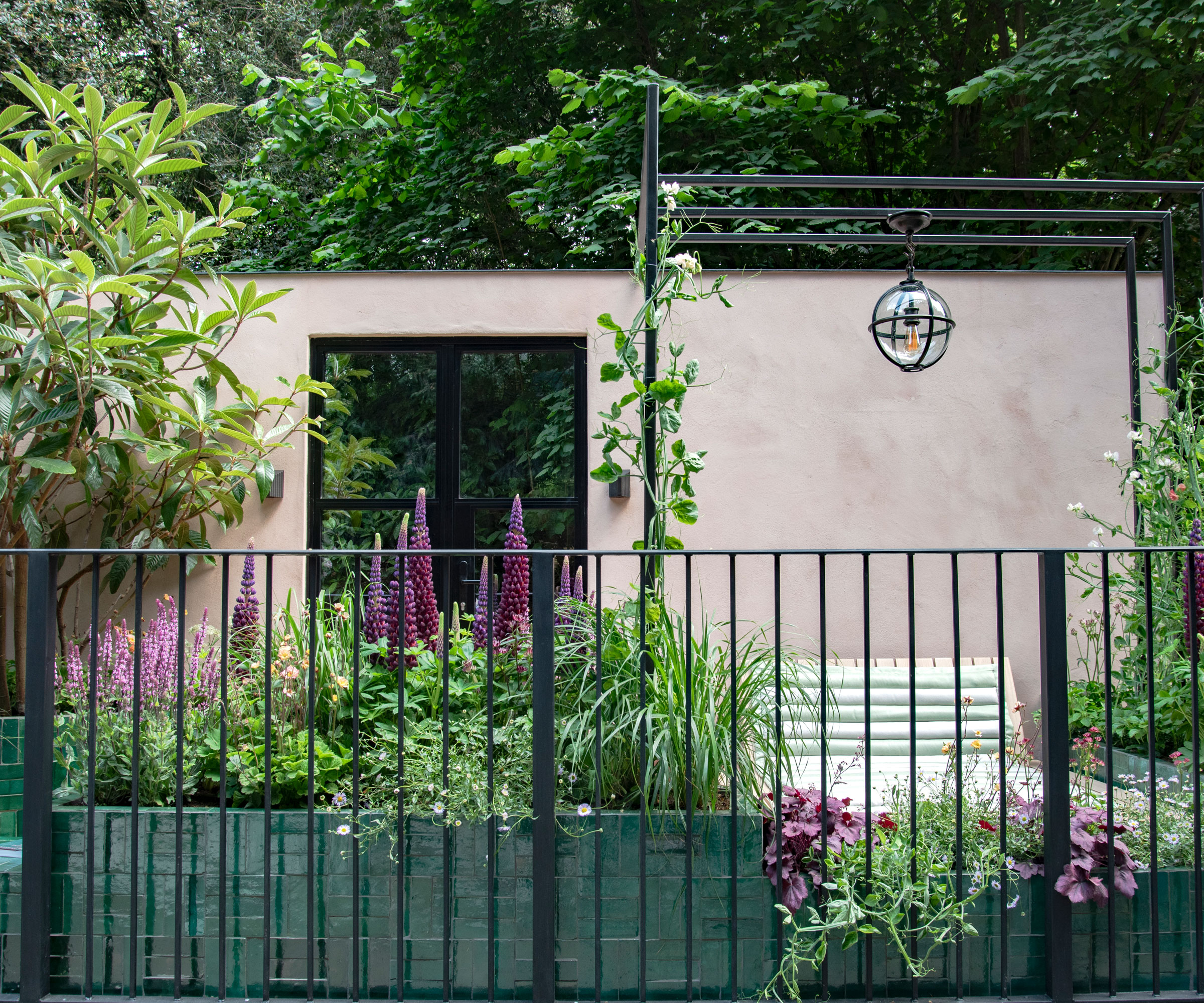
With tropical, spidery blooms that stop you in your tracks, who wouldn't obsess over these otherworldly blooms? But, while passion flowers are undoubtedly beautiful and impressive, these climbing plants are greedy feeders. They need fertilizer, and lots of it.
So, whether you’re growing one in a container or in the border, learning how to fertilize passion flowers properly is the key to keeping them happy and enjoying many months of flowers during the growing season.
I spoke with one passion flower expert, who revealed the best approach based on his experience and years of breeding and growing passion flowers, including advice on when to feed, how much to give, and what kind of fertilizer to actually use to get the best results.

How to fertilize passion flowers
Passion flowers are some of the best fast-growing climbing plants, and many are native to the tropical regions of the Americas. Most species can be grown down to zone 8, although one or two North American varieties can be planted in zone 5.
Passion flowers can grow in well-drained, sandy, gravelly or even rocky terrain, but to get the best results, grow them in fertile soil. With the right nutrition, they will remain healthy and grow faster. Here's how to feed your vines this year.
When to fertilize passion flowers

In terms of when and how to fertilize passion flowers, timing is everything.
'As a general rule, start feeding in early spring, as soon as you see signs of new growth,' says Myles Stewart Irvine, garden expert and passion flower breeder.
'They are greedy feeders, especially those climbers to grow in pots, and will benefit from fertilizer throughout spring and summer,' Myles adds.
It is best to stick to a fertilizing schedule, and you will want to feed once every month from April until August or early September.
'Some Passiflora want to be huge and produce masses of growth,' Myles continues, 'and while you can control their spread by growing passion flowers in pots, they will always do well with a regular dose of feed.
'I would advise that you stop feeding as the seasons begin to change and we approach the fall, as growth needs enough time to harden off before the frosts arrive.'
So, as Myles says, feed through the growing season, sticking to a once-a-month schedule, but remember to stop as the nights begin to draw in at the end of summer.
Feeding in October or any later would be an unnecessary fertilizing mistake that could actually do more harm than good.
How to fertilize passion flowers

'When feeding, use any good general-purpose feed, either liquid or slow release will do,' Myles says.
'Chicken manure pellets work well, as does seaweed,' Myles adds. Both of these will have a higher N (or nitrogen) figure when looking at the plant fertilizer numbers on the packaging.
Try these organic chicken manure pellets by Espoma, available from Walmart.
'If the plant is reluctant to flower, then a tomato fertilizer or something similar with less nitrogen and more potassium and phosphorus will be of benefit over the summer months.'
This organic tomato fertilizer from Espoma, available via Amazon, should help to encourage the maximum number of flowers during June, July and August. Just be sure to follow the directions on the packaging and dilute as needed.
If you are growing passion flowers in the ground in rich soil, you might not need to feed as often, particularly if you are mulching once a year.
If your plants look happy and healthy and are full of flowers, an occasional feed should do the trick.
'Fertilizing passion flowers will help your plants become happy and healthy vines,' Myles says. 'And, when they are in good shape, they are better equipped to fight pests.
'I never use pesticides on my vines, I just leave the plants to get on with it. Spider mites and mealybugs can be problematic, especially if grown in greenhouses, but if your plant is well fed and content, it should be able to tolerate minor damage.'
FAQs
My passion flower doesn't have many blooms this year. Should I feed it?
If your passion flower is not producing many flowers, do not automatically reach for the fertilizer. Unless your climber is positioned somewhere with at least six or more hours of sunshine per day, it can struggle in terms of flower production. However, if it is in a sunny position but doesn't have many blooms, try using a bloom booster feed, like a tomato fertilizer, to help it.
Pests such as aphids can also be a nuisance on young passion flower growth. But one trick is to grow companion plants nearby, which can help to attract pests as a sort of plant offering.
Try growing calendula in your yard this year, with seeds available from Amazon, which is a well-known companion plant that many gardeners use.
For more inspiration, see our guide on climbing plants that thrive on neglect, and fill your yard with several easy-to-grow vines this year.
Shop garden accessories
These long leather gloves will protect your hands and arms when planting or pruning passion flowers.







